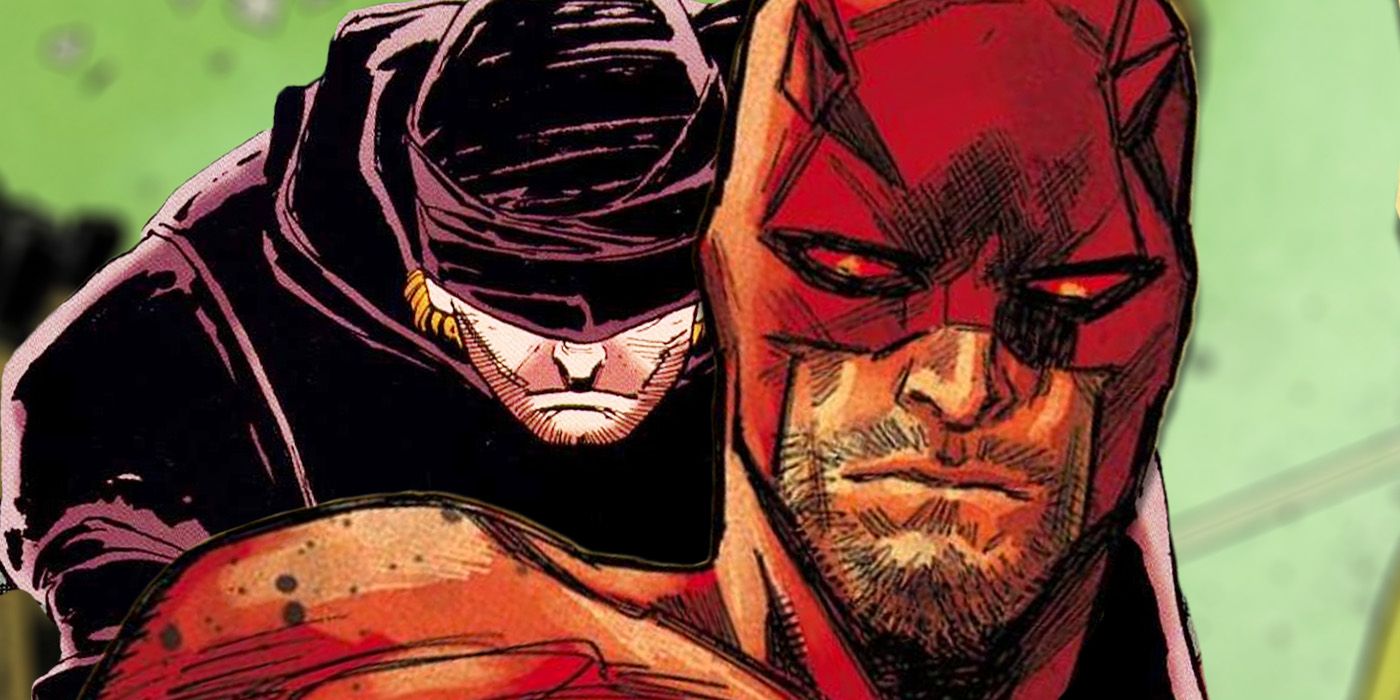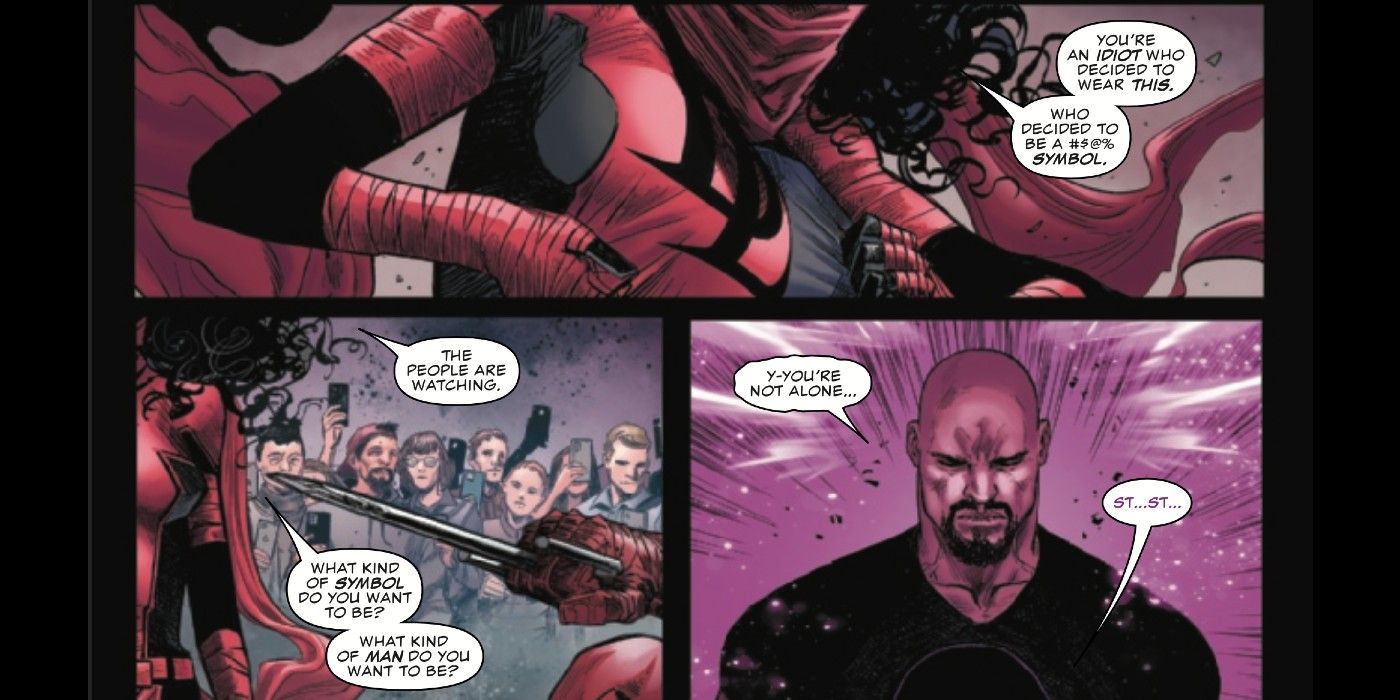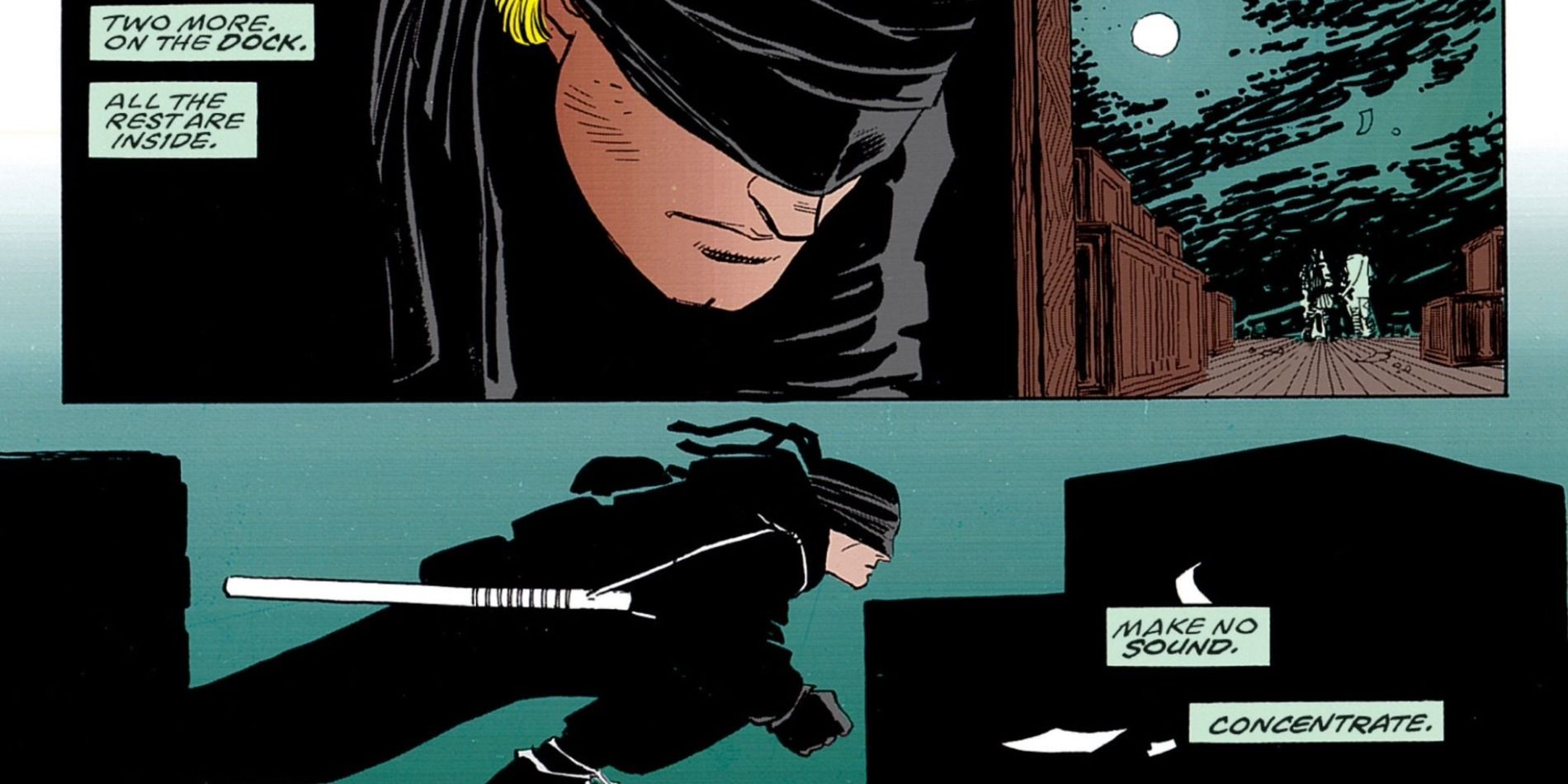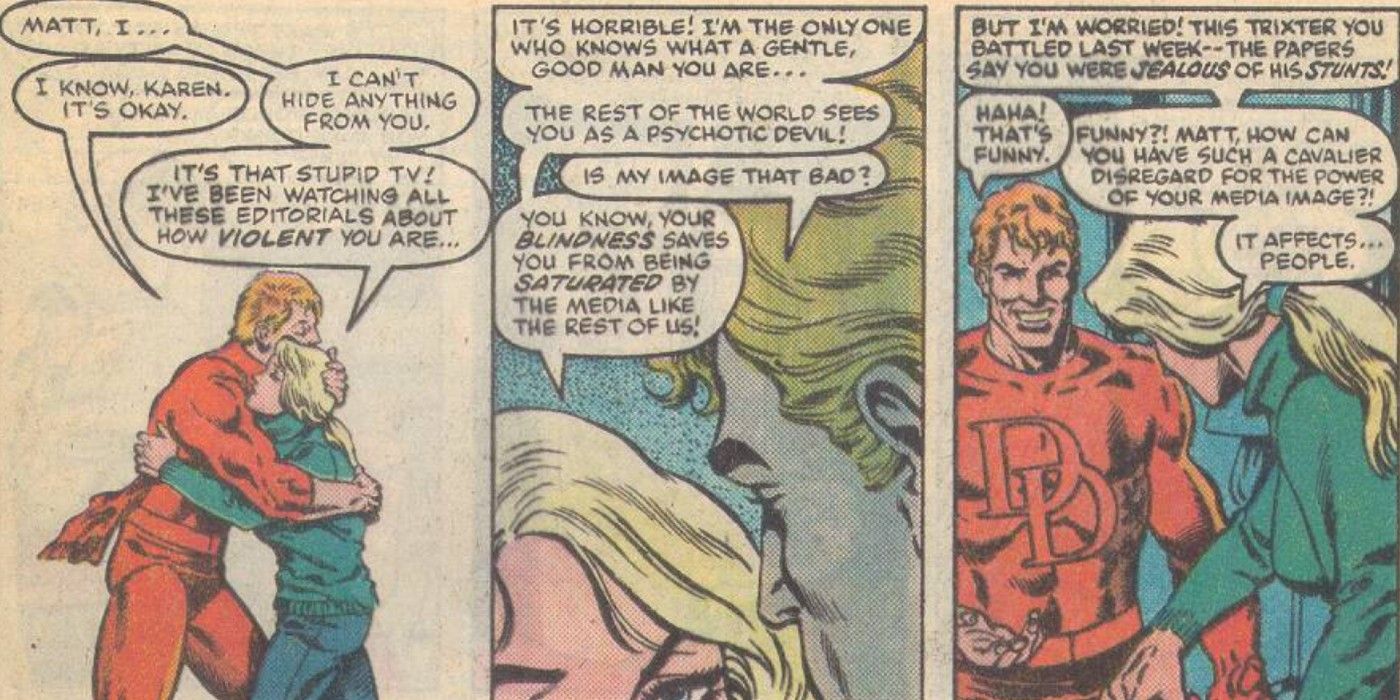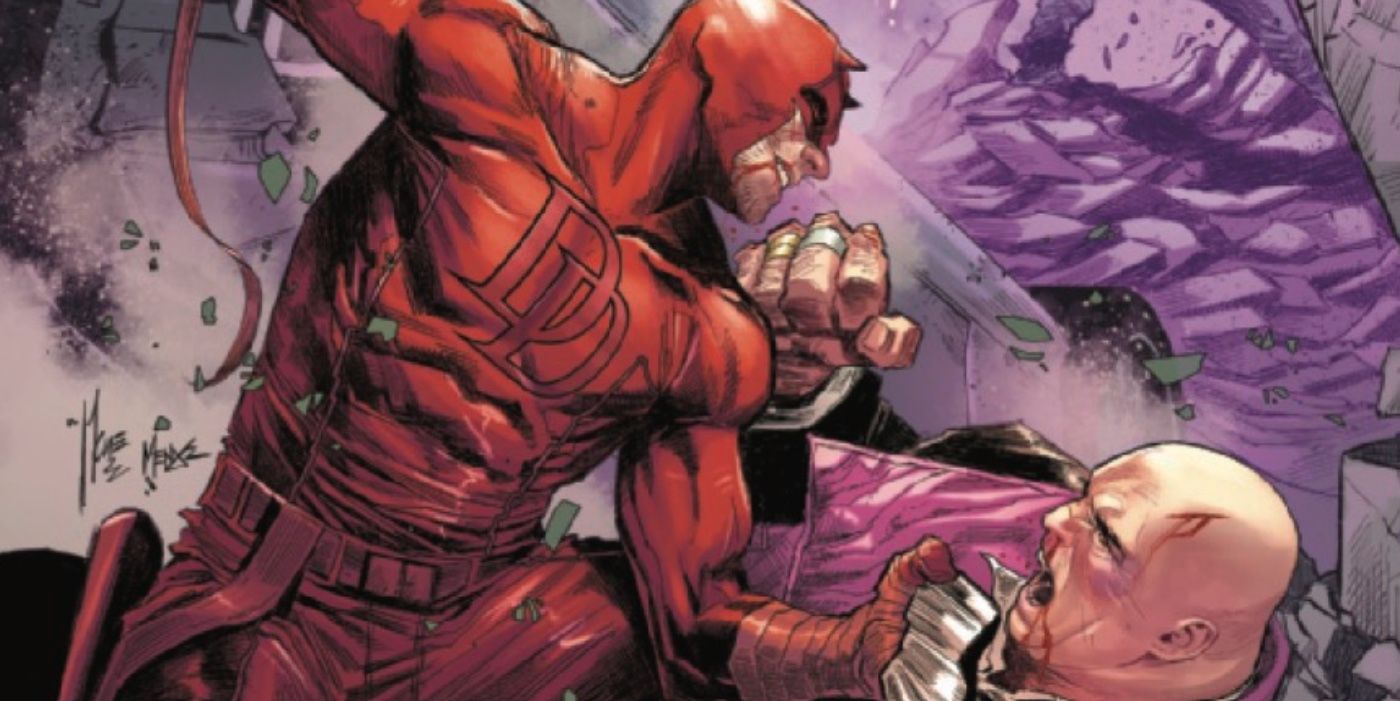Warning: spoilers for Devil's Reign #6 are ahead.
Costumes are a crucial part of defining a character's perspective in superhero comics, and Marvel Comics' Daredevil is an ultimate example of this. Known for his acrobatics and enhanced senses amid his blindness, Daredevil is defined by the unresolvable tension between the corruption of his environment and his rigid Catholic beliefs. For someone as invested in modeling themselves after Christ, Matt Murdock's decision to dress up as a devil may be strange to some fans, making his black suit in Frank Miller and John Romita Jr.'s series, Daredevil: The Man Without Fear, a better alternative to some.
Across his publication history, Daredevil's costume has changed numerous times. Originally, Daredevil wore a yellow and red suit, which comes across as overly circus-like to contemporary eyes. His red devil suit later cemented the conflict at the center of his character as he struggled to see how he could still be a good Catholic while regularly doling out violence against the city's criminals. Lastly, the black sweatsuit from Miller and Romita Jr.'s Man Without Fear became popular for its simplicity, making regular appearances in Daredevil's later comics and later in his Netflix show.
While the black Man Without Fear costume is iconic, it betrays the ideals that Daredevil's character is built upon, a fact that Devil's Reign #6 makes clear. The Devil's Reign event from Chip Zdarsky, Marco Checchetto, Marcio Menyz, and Clayton Cowles has chronicled the showdown between Daredevil and Kingpin, as the latter has tried to enhance his power as Mayor of New York by outlawing superheroes. Determined to uncover Daredevil's identity, Kingpin mistakenly murdered Matt Murdock's twin brother, Mike, leading Daredevil to nearly kill Fisk out of rage. As Daredevil was poised to kill Kingpin, Elektra told him, "...you're not an assassin. You're not a killer in the shadows. You're an idiot who decided to wear [a red devil costume]. Who decided to become a #$@% symbol. The people are watching. What kind of symbol do you want to be? What kind of man do you want to be?"
Elektra's words get at the heart of why Daredevil's red costume is an indispensable part of his character. Daredevil is known in Marvel Comics as the "Man Without Fear," and while that is often seen as a reference to his actions as a blind vigilante, it's an incomplete interpretation. Rather, Daredevil has a demonstrated history in comics as a man without fear of being judged for his flaws. His devil suit reflects his honesty with the fact that he will never be a perfect superhero in the eyes of the public, nor will he ever be a perfect Catholic to himself. By dressing as his moral antithesis, Daredevil armors himself with his own contradictions, bringing a uniquely human touch to his public image as a superhero.
Daredevil's Black Suit Is At Odds With His Character.
Daredevil's black suit removes this aspect of visibility that has been a recurring part of his comics for decades. In Daredevil: The Man Without Fear #5, Frank Miller writes, "Daredevil. It is the name of a shadowed demon–an unseen avenger–a silent, invisible savior of the innocent." This directly contradicts Elektra's statement in Devil's Reign that "The people are watching," and that his costume's devil iconography has become a symbol to the public.
In fact, by giving him a black costume and describing him as a "shadowed demon" and "silent, invisible savior," Miller more accurately describes Batman instead of Daredevil. This is a coincidence that is impossible to overlook given Miller's history as the writer of Batman: Year One, itself an origin story that predates The Man Without Fear. And while Year One marries the significance of Batman's costume to the fearsome effect that it has on the public, The Man Without Fear falls short of doing the same for Daredevil because of how incongruent the black suit is to Matt's ideals.
Daredevil's Troubles With His Public Image Stems From His Devil Suit.
A recurring theme in Daredevil's comics is the complexities of his public image, a fact that Devil's Reign #6 engages with through Elektra's dialogue. In a storyline from Daredevil #242 by Ann Nocenti, Keith Pollard, Danny Bulanadi, Joe Rosen, and Christie Scheele, Matt is confronted by the media's negative portrayal of Daredevil's violence. When his girlfriend, Karen Page, informs him of the misinformation in the newspapers, Matt laughs it off, causing Karen to say, "Matt, how can you have such a cavalier disregard for the power of your media image?! It affects people..." Later, this drives a wedge in their relationship, as Karen struggles to reconcile with Matt's gentle nature amidst the brutality of Daredevil's violence in news footage. This exchange between Matt and Karen gets at the root of Elektra's question in Devil's Reign. While Matt may already know the kind of man he is, the public still needs to be convinced that he is a good man. Thus, his devil suit is an unusual way for him to redefine himself publicly, in a way that is not possible with his black costume.
The devilish appearance of Daredevil's red costume at once signals Matt Murdock's capacity for violence, while also providing an opportunity for him to establish himself as deeply committed to helping people. Daredevil #10 by Mark Waid, Chris Samnee, Matthew Wilson, and Joe Caramagna shows how Matt has to compensate for his costume's scary appearance. While rescuing the Purple Children, one of them shirks away in fear when Daredevil comes over to him. To establish rapport, Matt smiles and peels off his mask, saying, "It's all right. I'm not going to hurt you. I'm a good guy, see? No fear, kiddo. No fear." Daredevil is then able to successfully rescue the Purple Children from their father, Purple Man.
Marvel's Daredevil is at his best when he is forced to confront the public's view of his activities as a violent vigilante. His decision to wear a devil suit is refreshingly honest, because it leaves him with no conventional heroic façade to hide behind. Part of what makes Daredevil unique as a Marvel hero is that so many of his comics come with a specific, critical viewpoint on violence in the superhero genre. Therefore, unlike most superheroes, Daredevil has to earn his heroism in the eyes of the public, because he is dressed as a symbol of evil.
Daredevil cannot live up to his identity as the "Man Without Fear" in his black costume, because it doesn't represent his fearlessness about being judged by others, calling into question why The Man Without Fear series is titled as such to begin with. Regardless, when viewed within the context of Devil's Reign and previous Daredevil comics, the black suit provides an escape from public scrutiny that the red devil suit never will. By blending into his environment and wearing a suit devoid of specificities with the black suit, Daredevil loses the bravest part of his character: his willingness to define himself as a superhero beyond his worst impulses.

